-
U.S. water-use at lowest levels since before 1970
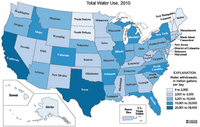
Water use across the United States reached its lowest recorded level in nearly forty-five years. According to a new USGS report, about 355 billion gallons of water per day (Bgal/d) were withdrawn for use in the entire United States during 2010. This represents a 13 percent reduction of water use from 2005 when about 410 Bgal/d were withdrawn and the lowest level since before 1970.
-
-
As drought continues, more Californians turn to greywater
California’s rainy season tends to run from October to late March, but for the third year in a row rain has been relatively absent, meaning that the state is currently suffering from a severe, unprecedented drought. With increasing water rates, a growing number of homeowners in Southern California are relying on greywater systems to support their landscapes and toilet flushing. “If the drought continues, honestly, I could see all new construction will have greywater systems of some kind because it really doesn’t make sense to put usable water in the sewer system,” says one expert.
-
-
Groundwater could be polluted with heavy metals by fracking flowback
The chemical makeup of wastewater generated by “hydrofracking” could cause the release of tiny particles in soils that often strongly bind heavy metals and pollutants, exacerbating the environmental risks during accidental spills, Cornell University researchers have found. Previous research has shown 10 to 40 percent of the water and chemical solution mixture injected at high pressure into deep rock strata, surges back to the surface during well development. Researchers found that the same properties that make the mixture so effective at extracting natural gas from shale can also displace tiny particles that are naturally bound to soil, causing associated pollutants such as heavy metals to leach out.
-
-
Debate over Ontario, Canada underground nuclear waste facility intensifies
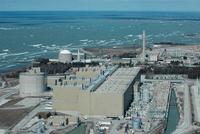
Ontario Power Generation’s (OPG) proposal to construct an underground nuclear waste disposal facility near the company’s Bruce Nuclear plantand on the edge of the Great Lakes is facing growing opposition from local municipalities and environmentalists. The facility would store low and intermediate nuclear waste from OPG’s Bruce, Pickering, and Darlington nuclear facilities. Environmentalists are concerned that a leak in the underground facility would be devastating for communities which depend on water from the Great Lakes.
-
-
U.S. corporations aware of current, future water risks
A new survey shows that nearly 60 percent of responding companies — the majority Fortune 500 and publically traded, representing virtually every industry sector — indicated that water is poised negatively to affect business growth and profitability within five years, while more than 80 percent said it will affect their decision on where to locate facilities. This is a stark increase from only five years ago, when water issues affected business growth and profitability for less than 20 percent of responding companies.
-
-
Total California water supplies at near-decade low
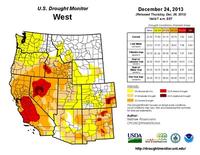
Advisory from UC Center for Hydrologic Modeling finds California’s statewide averages of snow, surface water, and soil moisture near 10-year lows. The threat of multi-year period of unsustainable groundwater depletion imminent if drought continues. The data show particularly steep water losses between November 2011 and November 2013, the early phase of the current drought. The researchers estimate that the Sacramento and San Joaquin River basins have already lost ten cubic kilometers of fresh water in each of the last two years — equivalent to virtually all of California’s urban and household water use each year.
-
-
Urgent action needed to save the Great Plains water supply
Significant portions of the Ogallala Aquifer, one of the largest bodies of water in the United States, are at risk of drying up if it continues to be drained at its current rate.The body of water, also known as the High Plains Aquifer, spans from Texas to South Dakota and drives much of the region’s economy. Scientists are proposing alternatives that will halt and hopefully reverse the unsustainable use of water drawdown in the aquifer.
-
-
World's shrinking groundwater sources in urgent need of better governance
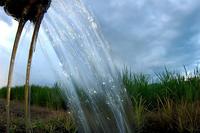
Groundwater makes up 97 per cent of the world’s available fresh water. Total global use is estimated by scientists at around 1,000 cubic kilometers a year, with the largest users being India, China, and the United States. Since 1900, the world has drawn down its groundwater reserves by an estimated 4,500 cubic kilometers — and demand continues to increase, especially in arid countries, which are rapidly running short of water that can be affordably extracted. Scientist has urged the world to take better care of its groundwater resources — or risk dangerous scarcities, economic impacts, and potential conflicts in coming decades.
-
-
Upper Rio Grande to experience growing gap between water supply and demand
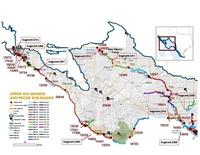
Increasing temperatures and changes in the timing of snowmelt runoff could impact the amount of water available on the upper Rio Grande in the future, says a news study. Temperatures will increase four to six degrees Fahrenheit by the end of the twenty-first century, according to the climate modeling used in the study. Although the modeling projects that total annual average precipitation in the basin will not change considerably, we are likely to see a decreasing snowpack, an earlier and smaller spring snowmelt runoff and an increase in the frequency, intensity and duration of both droughts and floods.
-
-
Seeds from Moringa oleifera trees better then chemicals for purifying water
Clean water is essential for good health. In many countries it is still difficult to obtain clean water. Even developed countries can benefit from a process that treats waste water without addition of further synthetic chemicals. Seeds from Moringa oleifera trees can be used to purify water. Researchers have discovered that seed material can offer a more efficient purification process than conventional synthetic materials in use today.
-
-
New catalyst for cleanup of nitrites
Nitrites and their more abundant cousins, nitrates, are inorganic compounds that are often found in both groundwater and surface water — a big problem, particularly for agricultural communities. The compounds are a health hazard, and the EPA places strict limits on the amount of nitrates and nitrites in drinking water. While it is possible to remove nitrates and nitrites from water with filters and resins, the process can be prohibitively expensive. Chemical engineers at Rice University have found a new catalyst that can rapidly break down nitrites.
-
-
Rising temperatures threaten Salt Lake City’s water supply
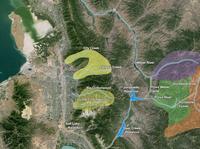
In an example of the challenges water-strapped Western cities will face in a warming world, new research shows that every degree Fahrenheit of warming in the Salt Lake City region could mean a 1.8 to 6.5 percent drop in the annual flow of streams that provide water to the city. By midcentury, warming Western temperatures may mean that some of the creeks and streams that help slake Salt Lake City’s thirst will dry up several weeks earlier in the summer and fall.
-
-
Aquifer supplying a third of U.S. irrigated groundwater depleting quickly: study
The High Plains Aquifer of Kansas — also called the Ogallala Aquifer — supplies 30 percent of the U.S. irrigated groundwater. New study finds that if current irrigation trends continue, 69 percent of the groundwater stored in the High Plains Aquifer will be depleted in fifty years.
-
-
Bacteria to clean contaminated leftover water used in fracking
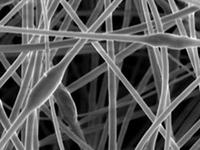
Fracking is a drilling technique which uses lots of water — up to 5-7 million gallons per frack. One well may be fracked several times. The water goes in clean and comes out contaminated with organic substances that render it unfit for reuse. Purifying that water would reduce the pressure on waste disposal sites called injection wells, as well as on sites of wastewater spills. Researchers say that bacteria may someday clean leftover frack water.
-
-
Analysts: arrogance, clumsiness of oil and gas industry caused fracking’s bad image
Oil and gas industry experts say arrogance, secrecy, and poor communication by the drilling industry have led to public anger over hydraulic fracturing, or fracking. These experts are calling for fracking companies to release more information to alleviate public concerns about the relationship between the drilling technology and water contamination.
-
- All
- Regional
- Water
- Biometrics
- Borders/Immig
- Business
- Cybersecurity
- Detection
- Disasters
- Government
- Infrastructure
- International
- Public health
- Public Safety
- Communication interoperabillity
- Emergency services
- Emergency medical services
- Fire
- First response
- IEDs
- Law Enforcement
- Law Enforcement Technology
- Military technology
- Nonlethal weapons
- Nuclear weapons
- Personal protection equipment
- Police
- Notification /alert systems
- Situational awareness
- Weapons systems
- Sci-Tech
- Sector Reports
- Surveillance
- Transportation
Advertising & Marketing: advertise@newswirepubs.com
Editorial: editor@newswirepubs.com
General: info@newswirepubs.com
2010-2011 © News Wire Publications, LLC News Wire Publications, LLC
220 Old Country Road | Suite 200 | Mineola | New York | 11501
Permissions and Policies
Editorial: editor@newswirepubs.com
General: info@newswirepubs.com
2010-2011 © News Wire Publications, LLC News Wire Publications, LLC
220 Old Country Road | Suite 200 | Mineola | New York | 11501
Permissions and Policies
